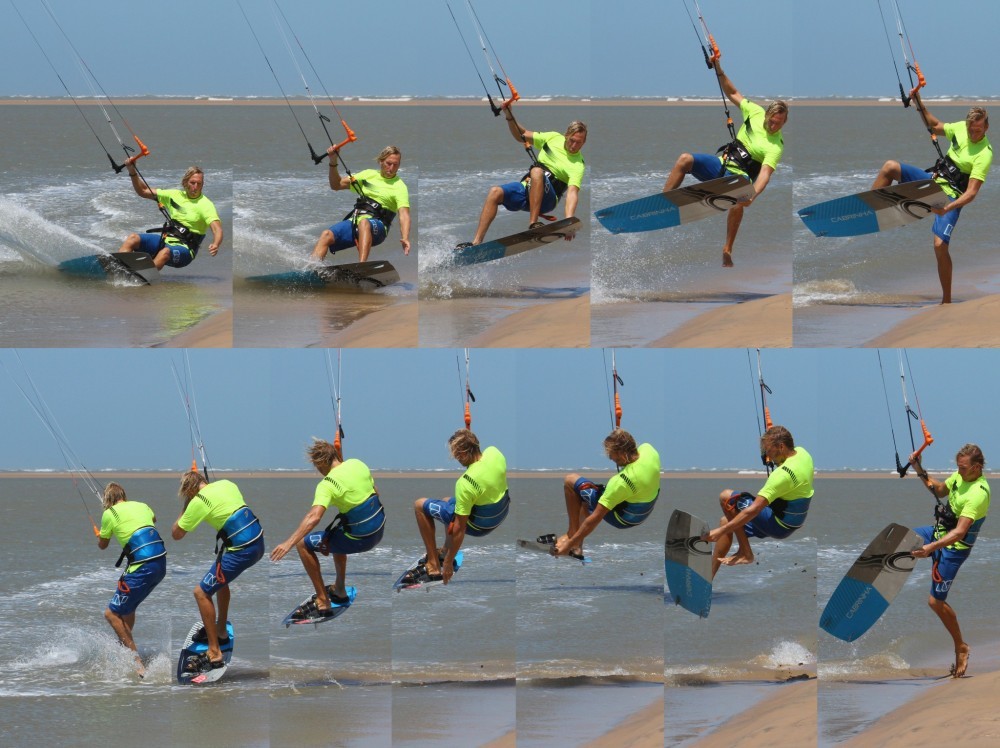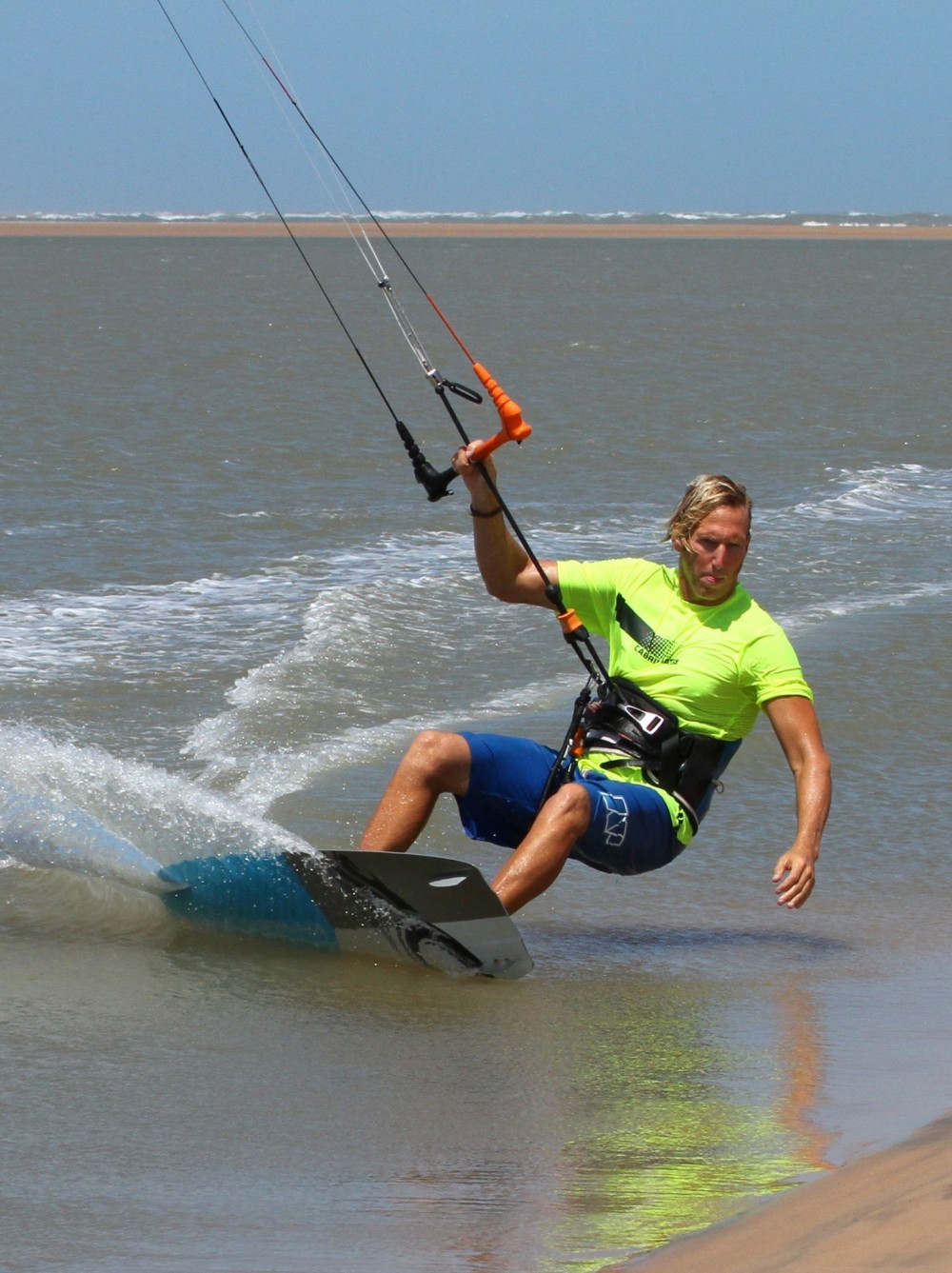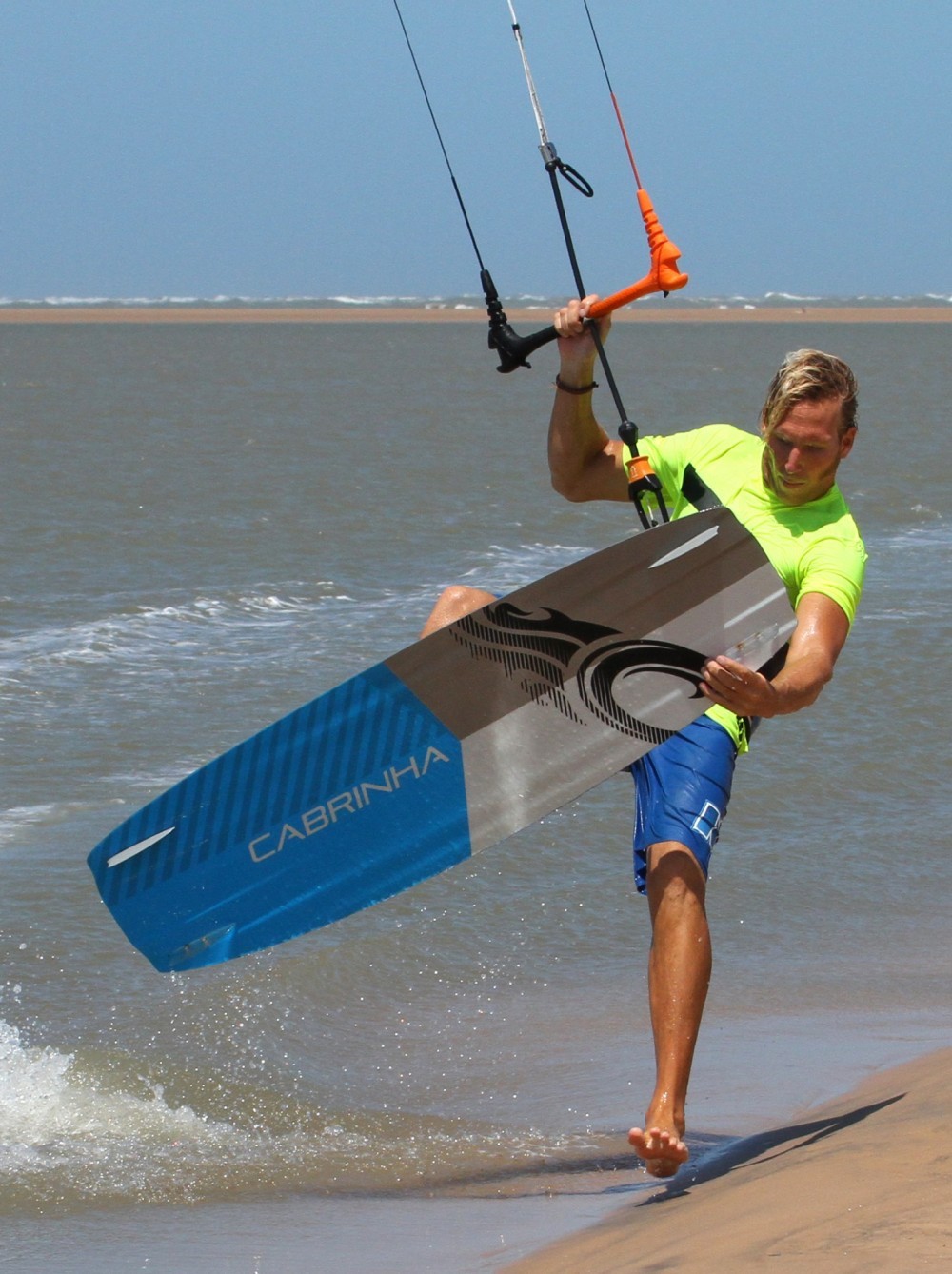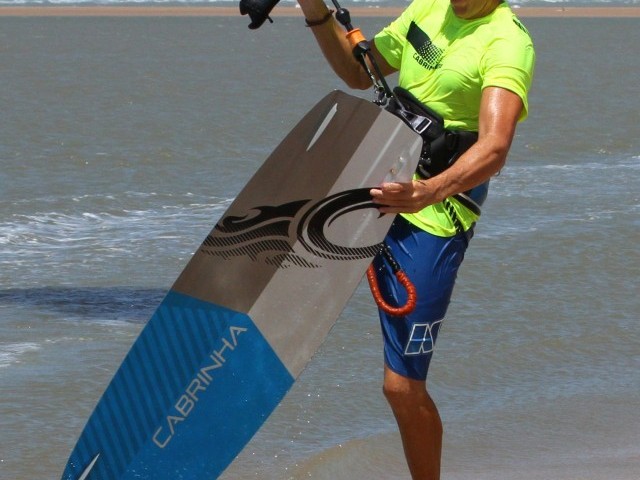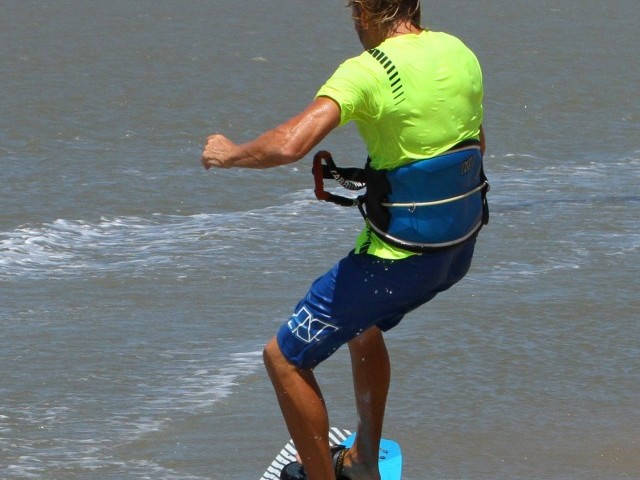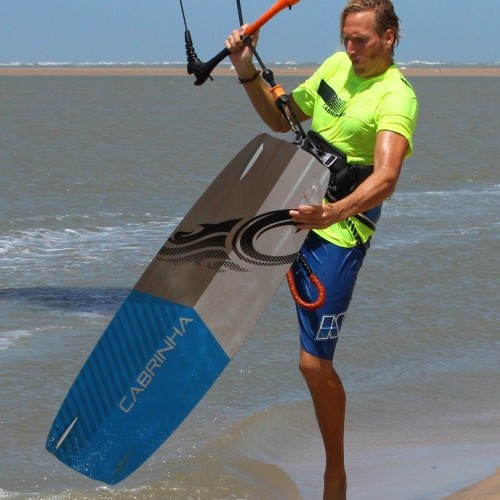
Foot Plant Transition
Technique / Intermediate
Introduction
In keeping with recent themes, here we have yet another cheeky transition. This one is an utter joy, nothing too flash, a mere modest planting of the front foot before springing back up and off. If you’ve already nailed the foot wash this one should be a doddle. If however, you haven’t, then your first port of call should be a grabbed air gybe and then the foot out variant. Those two will stand you in good stead to attack the foot plant, as you’ll be both comfortable controlling, steering and diving the kite with one hand, whilst the small matter of extracting and replacing your foot will be well rehearsed. As is our way, let’s have a look through some of the key parts of this move.
The Approach Pic A
The most important part here is to keep tension in your lines and edge against them, so that when you move the kite it lifts you, rather than you drifting underneath it and having nothing there. In this move it’s even more important as you’ll need some oomph in the kite to get you away from the beach or whatever potential obstacle you intend to stomp on. The trick here however, is gauging at what distance from the beach you should send the kite. Too early and you won’t make land, too late and you’ll be halfway up the beach with nowhere to go! Yet again tension helps here. Edging hard will reduce your speed, keep tension and enable you to judge when to send the kite. The other must do is to send the kite with purpose, it doesn’t have to be for long like a jump, but you want the kite moving not drifting. That said, you must not yank the bar in as this will prevent you from caving up. You can see that Christian is on a hard edge, driving upwind and he’s given the bar a decent send with his back hand whilst his front hand is stretched out forward to lead him upwind. Last thought here - wiggle your front foot loose in the strap, so you can free it easily.
Take Off Pic B
You don’t want to plough up the beach so getting airborne before you hit the sand is a must. As long as you’ve given the kite a short but sharp send, the kite will be moving and ready to lift you as soon as you ask it to. Here as Christian is about to hit the beach he carves harder so that he can stamp up off his back foot, whilst simultaneously pulling in on the bar. You aim is to kick against your edge to help the kite lift you up off the water. The hard carve will kill your speed and forward momentum so you shouldn’t float too far once you’ve popped. You can see that Christian is leaning forwards and is already reaching down towards the nose of the board, looking for the grab.
The Plant
Having freed his front foot by lifting his knee high into his chest, pushing the nose away with his front hand whilst pulling his foot back Christian is now primed to plant his foot. Needless to say, it’s a fine idea to stretch your leg as this will keep you high and make the back half of the move easier, whilst also enabling you to absorb any impact if you’ve come in too hot. Once Christian is over the beach, he actually lets the bar out slightly which lowers him towards the sand and drops him beneath the kite. You can see that Christian holds the board up high, where he wants it to be when it’s time to get the foot back in. Watch where you’re going so that you know when you’ll land and try to keep the bar level so that the kite doesn’t drift back in the window. Depending on how well you time and aim your approach, with the kite above you, you should be able to pause momentarily before heading back into the water.
The Bounce Pic D
This next step is the multitasking stage where you don’t want to get confused, and by the look on Christian’s face his cogs are turning! You need to simultaneously hop up off the beach with your back leg whilst holding the board out of the way, and pull in on the bar for lift whilst also diving the kite so that you’ll get pulled away from the beach. To dive the kite Christian twists his wrist as if he were body dragging.
Foot In Pic E
Next urgent job is to get your foot back in the strap so that it’s nice and snug before the pull comes from the kite. Christian continues to pull the bar in and dive the kite, but he is focused on the strap. Keeping the board at arms length gives him enough room to lift his leg and push his foot under the strap. To make sure your foot is firmly in pull the tail of the board as you push your foot. As the foot moves in you should increase the pressure on the bar to get the kite diving aggressively.
Touch Down Pic F
Once your foot is in you can release the grab and drop the board. Here Christian is touching down tail first. From hopping off the beach to touching down on the water there is very little time so if you can at least land tail first, the pull from the kite will pivot the board off the wind and will result in a downwind landing which will keep your momentum going. If you land on your edge you’ll stall and drop in. So as you drop down extend your back leg so that it forces the tail down and you land standing. Once you hit the deck you’ll need to get your back hand on the bar to lift the kite.
Top Tips
It’s best to try this at a relatively slow speed on soft sand at first. This way you can concentrate on the carve, take-off and getting the foot out. If it’s slow and gentle, then you can sit down once you’ve planted the foot. By doing this you’ll get your bearings and can then attack it with more verve. Once you hop and dive you’re committing to the landing and it will always be more comfortable if you’re first balanced enough to guarantee landing with both feet in the straps.
For learning the best wind direction is offshore to whatever you tend to plant your foot on. This will work equally well if the wind is cross, but it’ll be much harder to learn as you’ll need a bit of push sideways to make the water. Suffice to say this isn’t a move for any wind with some onshore in it!
On your approach already loosen your front foot in the strap, so that it’ll slip out easily. If you fight to pull it out you’ll be loosing precious time and most likely concentrate too much on this and not enough on the kite.
Now have a good scan through the sequence and have a play of the videos to see it in all its glory.
Common Problems
Not reaching terra firma so you have nothing to bounce off. It’s too easy to focus on popping and not on moving forwards. If you pull the bar in when you carve up the kite will keep pulling and it won’t allow you to turn upwind. Feather the bar away as you carve, which will keep tension in the back lines, but not too much which will allow you to move much further upwind towards your planting spot.
If you find that your kite has moved too far back in the window, and that once you plant your foot you are either off balance or you have nothing to then lift you and pull you away. This can be a direct result of letting the bar out to turn more upwind as it allows the kite to drift back unhindered. Make sure that when you carve that last bit you send the kite aggressively. It’s a short but sharp jab to get the kite up quickly. This way you’ll stop the kite above you and it’ll be ready when you need it.
If you’re having trouble getting your foot back in. Chances are that rather than diving the kite for landing, you’re trying to get your foot in first. There is not enough time to do these two separately. The trick is to dive the kite, which will counterintuitively give you more time and float, which you can use to get your foot comfortably back into the strap.
Keystones
- Short but sharp send whilst feathering the bar out
- Hard carve upwind with front hand forward
- Pop and pull
- Release bar pressure to plant foot whilst holding board up
- Pull, hop and dive whilst pulling board onto foot
This technique article was in Issue 57 of IKSURFMAG.
Related
By Christian and Karine
Christian and Karine have been working together as a coaching team, running improver to advanced kitesurfing clinics since 2003.






